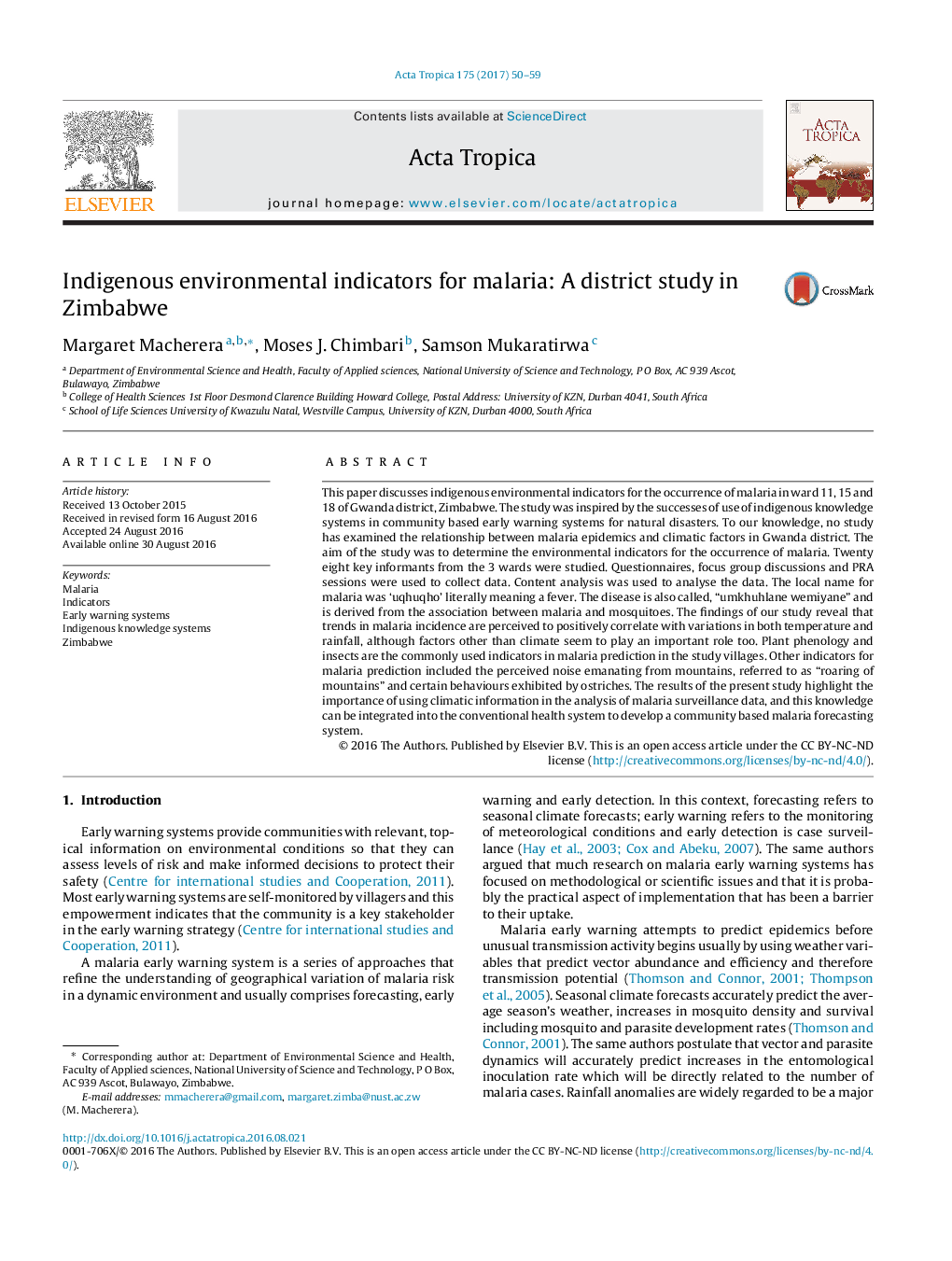| کد مقاله | کد نشریه | سال انتشار | مقاله انگلیسی | نسخه تمام متن |
|---|---|---|---|---|
| 5670739 | 1592749 | 2017 | 10 صفحه PDF | دانلود رایگان |
- Community perceptions on malaria were determined.
- Indigenous environmental indicators for the occurrence of malaria were established.
- Integration of IKS on malaria prediction into the malaria control programme is possible.
This paper discusses indigenous environmental indicators for the occurrence of malaria in ward 11, 15 and 18 of Gwanda district, Zimbabwe. The study was inspired by the successes of use of indigenous knowledge systems in community based early warning systems for natural disasters. To our knowledge, no study has examined the relationship between malaria epidemics and climatic factors in Gwanda district. The aim of the study was to determine the environmental indicators for the occurrence of malaria. Twenty eight key informants from the 3 wards were studied. Questionnaires, focus group discussions and PRA sessions were used to collect data. Content analysis was used to analyse the data. The local name for malaria was 'uqhuqho' literally meaning a fever. The disease is also called, “umkhuhlane wemiyane” and is derived from the association between malaria and mosquitoes. The findings of our study reveal that trends in malaria incidence are perceived to positively correlate with variations in both temperature and rainfall, although factors other than climate seem to play an important role too. Plant phenology and insects are the commonly used indicators in malaria prediction in the study villages. Other indicators for malaria prediction included the perceived noise emanating from mountains, referred to as “roaring of mountains” and certain behaviours exhibited by ostriches. The results of the present study highlight the importance of using climatic information in the analysis of malaria surveillance data, and this knowledge can be integrated into the conventional health system to develop a community based malaria forecasting system.
137
Journal: Acta Tropica - Volume 175, November 2017, Pages 50-59
